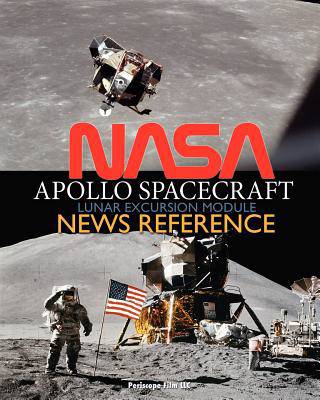
Bedankt voor het vertrouwen het afgelopen jaar! Om jou te bedanken bieden we GRATIS verzending (in België) aan op alles gedurende de hele maand januari.
- Afhalen na 1 uur in een winkel met voorraad
- In januari gratis thuislevering in België
- Ruim aanbod met 7 miljoen producten
Bedankt voor het vertrouwen het afgelopen jaar! Om jou te bedanken bieden we GRATIS verzending (in België) aan op alles gedurende de hele maand januari.
- Afhalen na 1 uur in een winkel met voorraad
- In januari gratis thuislevering in België
- Ruim aanbod met 7 miljoen producten
Zoeken
€ 41,95
+ 83 punten
Uitvoering
Omschrijving
Originally created in 1971 by NASA contractor Grumman, the Apollo Spacecraft News Reference (LEM) was intended to educate members of the media, government, and private sector contractors about one of history's most ambitious undertakings. Within its pages you'll find general information about the Apollo Program, and a detailed examination of the Lunar Excursion Module and crew extra-vehicular activity procedures and equipment. (A companion book that focuses on the CM is also available.) Scores of photos and diagrams accompany the easy-to-understand text. Chapters include: Introduction, Mission Description, Apollo Spacecraft, Lunar Module, Crew Personal Equipment, Environmental Control, Control and Displays, Guidance, Navigation, and Control, Main Propulsion, Reaction Control, Electrical Power, Communications, Instrumentation, Lighting, Portable Life Support System, Biographies, Grumman Aircraft Corp., Brief History of the LM, LM Manufacturing, Glossary, Contractors, The Moon (chapter written by Richard C. Hoagland), Index, and the LM Anatomy Booklet (reprinted in black and white). It also includes a fascinating chapter about "LM Derivatives", showing how variations of the LM could have been built and flown in support of a wide variety of missions. Although it may be one of the most complete studies of the systems and technology that made landing on the Moon possible, it's never been easy to find copies of this text because copies were never widely released -- until now. This reprint is of an edition featuring a mission similar to Apollo 15, 16 or 17, with astronauts performing three 7-hour EVAs using the Lunar Roving Vehicle. It features all the original text, diagrams and photos. It's a wonderful reference for the space flight fan, docent or engineering buff or for anyone else who ever wondered, "How'd they do that!"
Specificaties
Betrokkenen
- Auteur(s):
- Uitgeverij:
Inhoud
- Aantal bladzijden:
- 296
- Taal:
- Engels
Eigenschappen
- Productcode (EAN):
- 9781937684983
- Verschijningsdatum:
- 1/09/2011
- Uitvoering:
- Paperback
- Formaat:
- Trade paperback (VS)
- Afmetingen:
- 203 mm x 254 mm
- Gewicht:
- 589 g

Alleen bij Standaard Boekhandel
+ 83 punten op je klantenkaart van Standaard Boekhandel
Beoordelingen
We publiceren alleen reviews die voldoen aan de voorwaarden voor reviews. Bekijk onze voorwaarden voor reviews.








